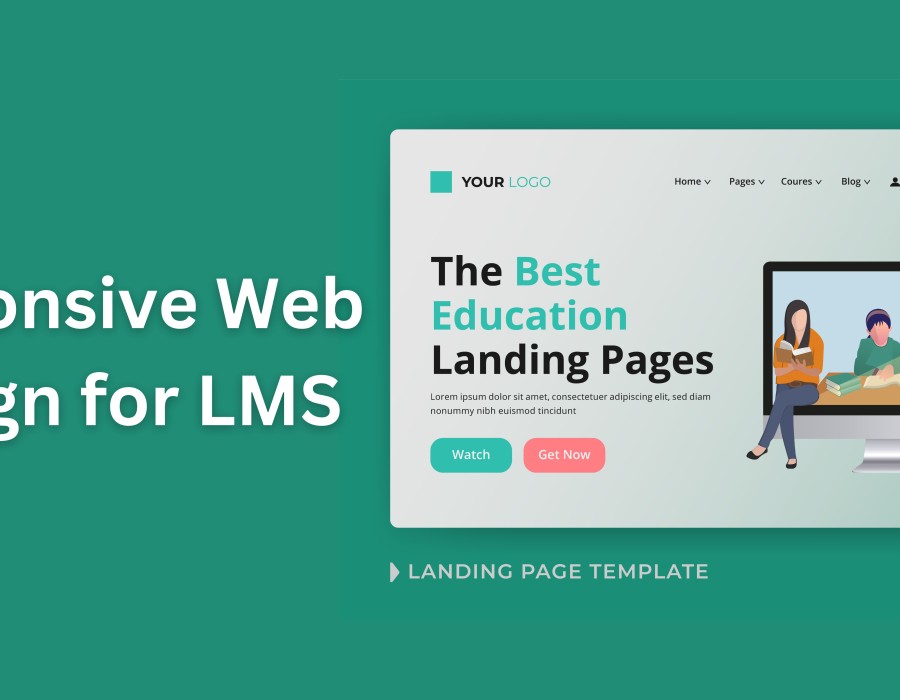How can educators and eLearning professionals ensure an optimal learning experience across various devices? The answer lies in responsive design. This blog post explores why responsive design is crucial for Learning Management Systems (LMS) and how it can transform your eLearning approach.
Understanding Responsive Design
Responsive design is a web development approach that ensures websites and applications perform optimally across various devices. Whether students access the LMS on a smartphone, tablet, or desktop, responsive design guarantees a seamless experience. This adaptability is achieved through flexible layouts, images, and cascading style sheets (CSS) that adjust according to the screen size and orientation.
Responsive design isn’t just about fitting content into screens of different sizes; it’s about delivering an equally engaging and functional experience, regardless of the device. This fluidity helps maintain a high level of user engagement and satisfaction, crucial for effective learning.
The Importance of Responsive Design in Learning Management Systems (LMS)
With the rise of mobile learning, having a responsive LMS website design is no longer optional but essential. Students and educators are constantly on the move, requiring access to learning materials from various devices. A non-responsive LMS can lead to a frustrating user experience, causing disengagement and lower course completion rates.
A responsive LMS ensures that users can seamlessly interact with the platform, whether they’re flipping through slides on a tablet or participating in discussions via a smartphone. It also means that multimedia elements like videos and interactive quizzes function correctly across all devices, enhancing the overall learning experience.
Benefits of Responsive Design for Educators and eLearning Professionals
Enhanced Accessibility
Responsive design significantly enhances the accessibility of your LMS. Students with different needs and preferences can access learning materials without barriers. Ensuring inclusivity is vital for fostering a fair learning environment.
Improved Engagement
A responsive LMS fosters higher engagement levels. When students can easily interact with the platform, they are more likely to participate actively in discussions, complete assignments on time, and engage with multimedia content. This increased interaction directly correlates with better learning outcomes.
Cost-Effective Solution
Implementing a responsive design is a cost-effective solution in the long run. Instead of developing separate versions of your LMS for different devices, a responsive design ensures one solution fits all. This approach reduces development and maintenance costs while providing a consistent user experience.
Challenges and Solutions in Adopting Responsive Design for LMS
Technical Complexity
One of the primary challenges in adopting a responsive design is the technical complexity involved. Ensuring that all elements of the LMS function correctly across various devices requires meticulous planning and testing. Collaborating with experienced web developers and designers can mitigate these challenges.
Content Adaptation
Adapting content for different devices can be challenging. Text, images, and multimedia need to be optimised to provide a consistent experience. Using responsive design frameworks and tools can simplify this process, ensuring that content is accessible and engaging on all devices.
Performance Optimisation
Responsive designs can sometimes lead to performance issues, especially on lower-end devices. Optimising images, minimising code, and using efficient loading techniques can help maintain a smooth user experience. Regular performance testing is crucial to identify and address potential issues.
Best Practices for Implementing Responsive Design in Your LMS
Prioritise Mobile-First Design
Adopting a mobile-first design approach ensures that your LMS is optimised for smaller screens before scaling up to larger devices. This strategy helps create a more intuitive and user-friendly experience for mobile users.
Use Flexible Grid Layouts
Flexible grid layouts allow your LMS to adapt to different screen sizes seamlessly. By using CSS frameworks like Bootstrap or Foundation, you can create a dynamic layout that adjusts based on the device, providing a consistent user experience.
Optimise Multimedia Content
Ensure that all multimedia content, including images, videos, and interactive elements, is optimised for various devices. Compress images, use adaptive video streaming, and design interactive elements that function well on touch screens.
Conduct Regular Testing
Regular testing across different devices and browsers is essential to ensure your LMS remains responsive. Use tools like BrowserStack or Sauce Labs to test the platform’s performance and functionality on various devices, identifying and addressing potential issues promptly.
Conclusion
Incorporating responsive design into your LMS is not just a trend; it’s a necessity in today’s mobile-driven world. By ensuring your LMS is accessible, engaging, and functional across all devices, you can enhance the learning experience, boost engagement, and achieve better educational outcomes.
The future of eLearning lies in adaptability and user-centric design. By integrating responsive design principles, you’re not just improving your platform—you’re investing in the success of your learners. Ready to take the next step? Explore how responsive design can transform your LMS and set your institution apart in the competitive world of online education.





Comments